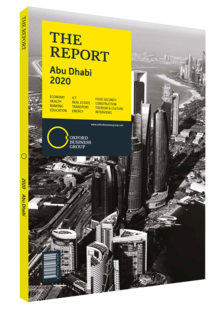Ebrahim Obaid Al Zaabi, Director-General, UAE Insurance Authority (IA): Interview

Interview: Ebrahim Obaid Al Zaabi
To what extent could greater consolidation in the insurance sector help lower pressure on margins, and could regulatory reform help in this regard?
EBRAHIM OBAID AL ZAABI: The desire of investors and international insurance companies to operate in the UAE reflects the strength and solvency of the local market. After the full implementation of the financial regulations from the beginning of 2018, it is expected that there will be a number of mergers between insurers to meet the new solvency requirements. The IA encourages these consolidations, because we recognise the importance of creating competitive and resilient entities with strong financial solvency in making our country competitive.
How would you describe the role the sector plays in economic development, and what regulations have encouraged this participation?
AL ZAABI: The IA strongly believes in the importance of investing in infrastructure in the interest of the national economy. We have seen Dh63.6bn ($17.3bn) invested into this vital sector, 38% of which was invested in stocks and bonds. Additionally, 28% of this investment was in deposits. Shareholders’ total equity in the national insurance companies amounted to Dh20.5bn ($5.6bn). What is more, gross written premium (GWP) were at Dh43.7bn ($11.9bn) in 2018.
The financial regulations for insurance and takaful (Islamic insurance) companies issued in 2014 determined the limits of distribution and allocation of the invested assets permitted for insurance companies. For government securities and bonds, the ceiling limit for overall exposure of a certain class of related assets is 25%. For cash and bank deposits within the UAE, it is 5%, and 50% is the maximum sub-limit. The ceiling limit for equity instruments assets in listed and unlisted companies within the UAE is 30%, and 10% as a maximum sub-limit for exposure of a particular class of related assets. For equity instrument assets, including units in mutual funds in listed and unlisted companies outside the country, the ceiling limit is 20%, and 10% is the maximum sub-limit for exposure.
What advances have been made in recent years regarding dispute resolution?
AL ZAABI: The IA is keen to resolve complaints of the insured and we have carried out several efforts to facilitate and expedite resolving disputes. One such example is the formation of committees inside the IA to focus on disputes arising from contracts, operations and services. We have also updated the methods used for registering and receiving complaints. We now use smart services instead of personnel and paper requests. These changes have had results, as the authority has resolved more than 95% of registered complaints in the last five years.
Which regulatory changes would allow for the reinsurance market to achieve its full growth potential?
AL ZAABI: The size and performance of our insurance sector reflects the UAE’s potential to be a global reinsurance hub. Our country is ranked first in the Middle East and North Africa in terms of GWP over the last decade. We have issued instructions for the organisation of reinsurance operations to encourage the establishment of national reinsurance companies. This will attract well-known, global reinsurance companies.
The new reinsurance regulations contain the main elements needed to regulate and develop the market in accordance with global best practices. We have released regulations regarding licensing and registration processes, the opening of branches of foreign reinsurance companies and internal company controls. Moreover, there are provisions of the reinsurance business that are assumed by the insurance company, as well as a mechanism for participation in insurance or reinsurance pools. Lastly, the maximum reinsurance premiums received by the insurance company has been set at 49% of GWP, with provisions for enforcement.
You have reached the limit of premium articles you can view for free.
Choose from the options below to purchase print or digital editions of our Reports. You can also purchase a website subscription giving you unlimited access to all of our Reports online for 12 months.
If you have already purchased this Report or have a website subscription, please login to continue.

